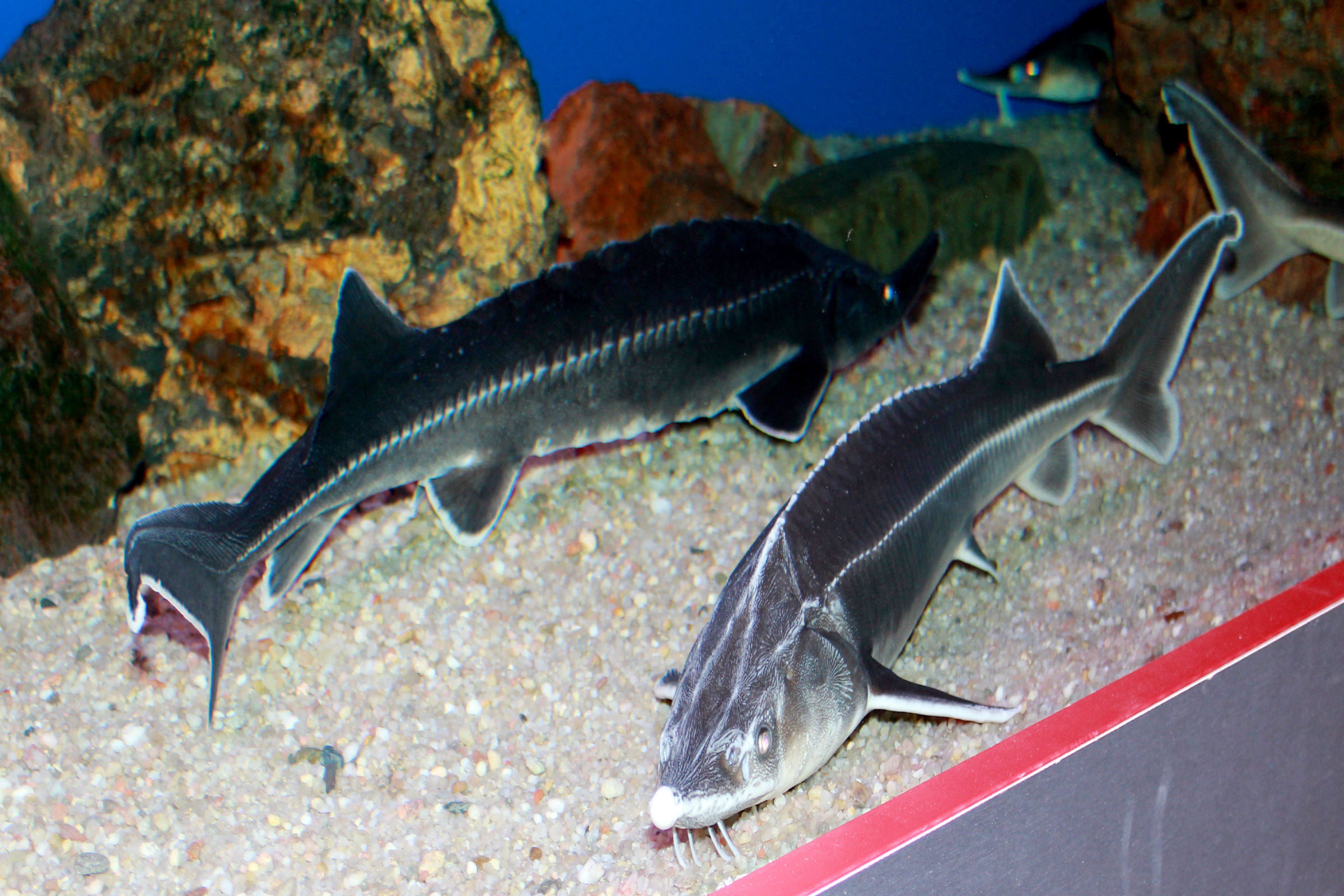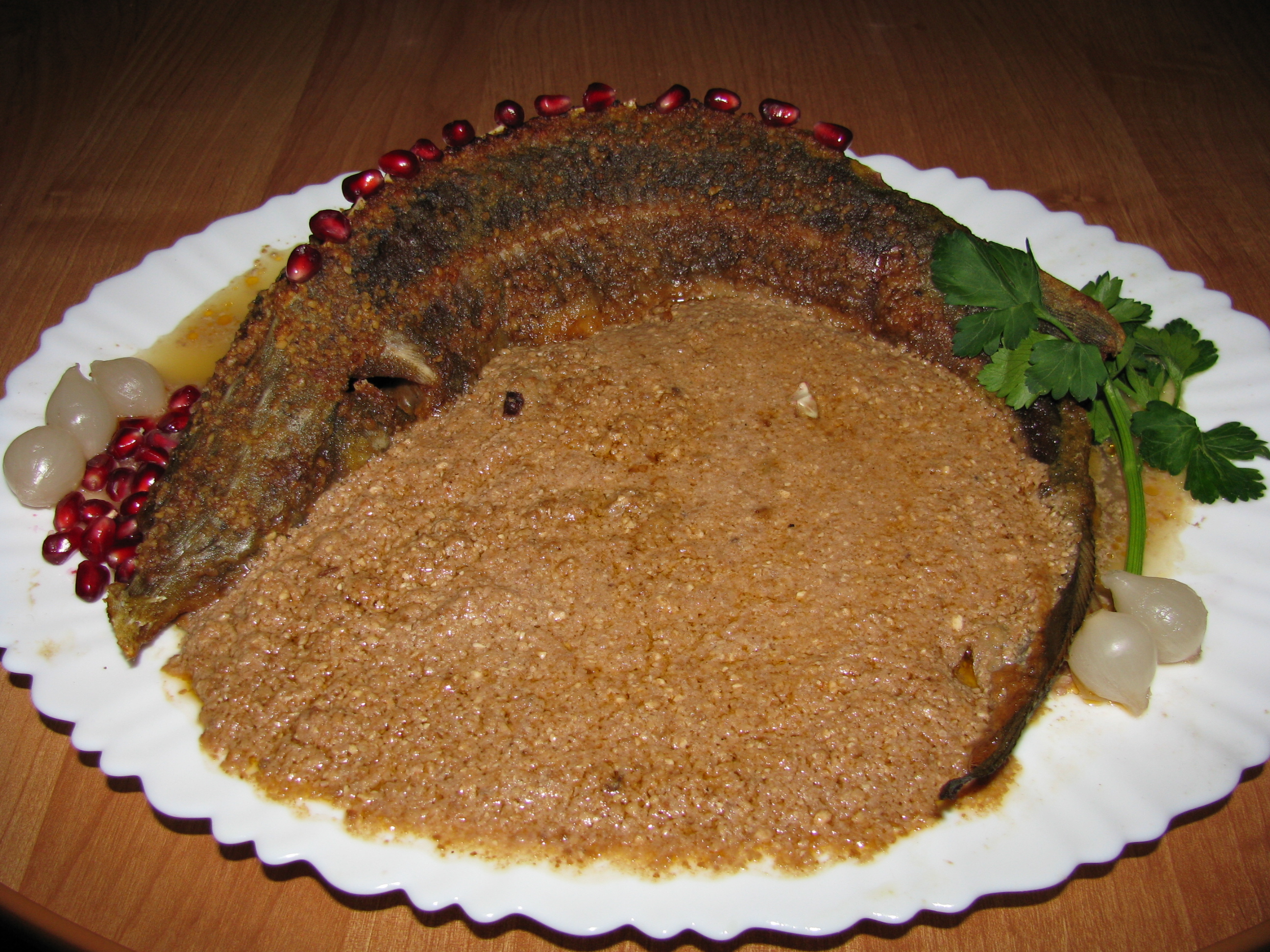Sterlet on:
[Wikipedia]
[Google]
[Amazon]
The sterlet (''Acipenser ruthenus'') is a relatively small species of

 The sterlet commonly reaches the age of 22 to 25 years. Males reach sexual maturity at 3–7 years old and females at 4–12 years old. Spawning occurs from the middle of April to the beginning of June. Females may lay from 15,000–44,000 eggs, at water temperatures preferably 12–17 °C (54–63 °F).
The sterlet commonly reaches the age of 22 to 25 years. Males reach sexual maturity at 3–7 years old and females at 4–12 years old. Spawning occurs from the middle of April to the beginning of June. Females may lay from 15,000–44,000 eggs, at water temperatures preferably 12–17 °C (54–63 °F).
 In Russia, it is held in high esteem on account of its excellent flesh, contributing also to the best kinds of caviar and
In Russia, it is held in high esteem on account of its excellent flesh, contributing also to the best kinds of caviar and
sturgeon
Sturgeon is the common name for the 27 species of fish belonging to the family Acipenseridae. The earliest sturgeon fossils date to the Late Cretaceous, and are descended from other, earlier acipenseriform fish, which date back to the Early ...
from Eurasia
Eurasia (, ) is the largest continental area on Earth, comprising all of Europe and Asia. Primarily in the Northern and Eastern Hemispheres, it spans from the British Isles and the Iberian Peninsula in the west to the Japanese archipelag ...
native to large rivers that flow into the Black Sea
The Black Sea is a marginal mediterranean sea of the Atlantic Ocean lying between Europe and Asia, east of the Balkans, south of the East European Plain, west of the Caucasus, and north of Anatolia. It is bounded by Bulgaria, Georgia, Rom ...
, Azov Sea
The Sea of Azov ( Crimean Tatar: ''Azaq deñizi''; russian: Азовское море, Azovskoye more; uk, Азовське море, Azovs'ke more) is a sea in Eastern Europe connected to the Black Sea by the narrow (about ) Strait of Kerch ...
, and Caspian Sea
The Caspian Sea is the world's largest inland body of water, often described as the world's largest lake or a full-fledged sea. An endorheic basin, it lies between Europe and Asia; east of the Caucasus, west of the broad steppe of Central A ...
, as well as rivers in Siberia
Siberia ( ; rus, Сибирь, r=Sibir', p=sʲɪˈbʲirʲ, a=Ru-Сибирь.ogg) is an extensive geographical region, constituting all of North Asia, from the Ural Mountains in the west to the Pacific Ocean in the east. It has been a part ...
as far east as Yenisei
The Yenisey (russian: Енисе́й, ''Yeniséy''; mn, Горлог мөрөн, ''Gorlog mörön''; Buryat: Горлог мүрэн, ''Gorlog müren''; Tuvan: Улуг-Хем, ''Uluğ-Hem''; Khakas: Ким суғ, ''Kim suğ''; Ket: Ӄук, ...
. Populations migrating between fresh and salt water (anadromous
Fish migration is mass relocation by fish from one area or body of water to another. Many types of fish migrate on a regular basis, on time scales ranging from daily to annually or longer, and over distances ranging from a few metres to thousa ...
) have been extirpated.Also known as Sterlet sturgeon.
Due to overfishing
Overfishing is the removal of a species of fish (i.e. fishing) from a body of water at a rate greater than that the species can replenish its population naturally (i.e. the overexploitation of the fishery's existing fish stock), resulting in t ...
(for its flesh, caviar, and isinglass
Isinglass () is a substance obtained from the dried swim bladders of fish. It is a form of collagen used mainly for the clarification or fining of some beer and wine. It can also be cooked into a paste for specialised gluing purposes.
...
), pollution, and dams, the sterlet has declined throughout its native range and is considered vulnerable by the IUCN
The International Union for Conservation of Nature (IUCN; officially International Union for Conservation of Nature and Natural Resources) is an international organization working in the field of nature conservation and sustainable use of natu ...
. Restocking projects are ongoing, and it has been introduced to some regions outside its native range, but the latter have generally not become self-sustaining. Today, the majority of the international trade involves sterlets from aquaculture
Aquaculture (less commonly spelled aquiculture), also known as aquafarming, is the controlled cultivation ("farming") of aquatic organisms such as fish, crustaceans, mollusks, algae and other organisms of value such as aquatic plants (e.g. lot ...
.
Physical appearance
*The sterlet may reach 16 kg in weight and 100 to 125 cm in length, rarely exceeding a length of 90 cm. *It is quite variable in coloration, but usually has a yellowish ventral side. *It is distinguishable from other European species of sturgeons by the presence of a great number of whitish lateral scutes, fringed barbels, and an elongated and narrow snout, highly variable in length.Feeding habits
The sterlet's main source of food isbenthic
The benthic zone is the ecological region at the lowest level of a body of water such as an ocean, lake, or stream, including the sediment surface and some sub-surface layers. The name comes from ancient Greek, βένθος (bénthos), meaning " ...
organisms; they commonly feed on crustaceans
Crustaceans (Crustacea, ) form a large, diverse arthropod taxon which includes such animals as decapods, seed shrimp, branchiopods, fish lice, krill, remipedes, isopods, barnacles, copepods, amphipods and mantis shrimp. The crustacean g ...
, worm
Worms are many different distantly related bilateral animals that typically have a long cylindrical tube-like body, no limbs, and no eyes (though not always).
Worms vary in size from microscopic to over in length for marine polychaete wor ...
s, and insect larva
A larva (; plural larvae ) is a distinct juvenile form many animals undergo before metamorphosis into adults. Animals with indirect development such as insects, amphibians, or cnidarians typically have a larval phase of their life cycle.
...
e.

Life history
 The sterlet commonly reaches the age of 22 to 25 years. Males reach sexual maturity at 3–7 years old and females at 4–12 years old. Spawning occurs from the middle of April to the beginning of June. Females may lay from 15,000–44,000 eggs, at water temperatures preferably 12–17 °C (54–63 °F).
The sterlet commonly reaches the age of 22 to 25 years. Males reach sexual maturity at 3–7 years old and females at 4–12 years old. Spawning occurs from the middle of April to the beginning of June. Females may lay from 15,000–44,000 eggs, at water temperatures preferably 12–17 °C (54–63 °F).
As pond fish
Sterlets require relatively large ponds with good water conditions, and may get entangled in plants such as blanketweed. They may require special food such as sterlet sticks, as they are unable to digest the vegetable proteins usually found in commercial fish foods.As food
isinglass
Isinglass () is a substance obtained from the dried swim bladders of fish. It is a form of collagen used mainly for the clarification or fining of some beer and wine. It can also be cooked into a paste for specialised gluing purposes.
...
.
History in the Danube
The sterlet (''Acipenser ruthenus'' in Linnaeus' classification) is the last of the five native sturgeon species inhabiting the Middle and Upper Danube River. Its population has dropped significantly, mainly due to the degradation of main habitats, spawning grounds and foraging grounds.References
{{Authority control Freshwater fish of Europe Fish of Europe Fish of the Black Sea Fish of Central Asia Fish of Russia Fish described in 1758 Acipenser Taxa named by Carl Linnaeus